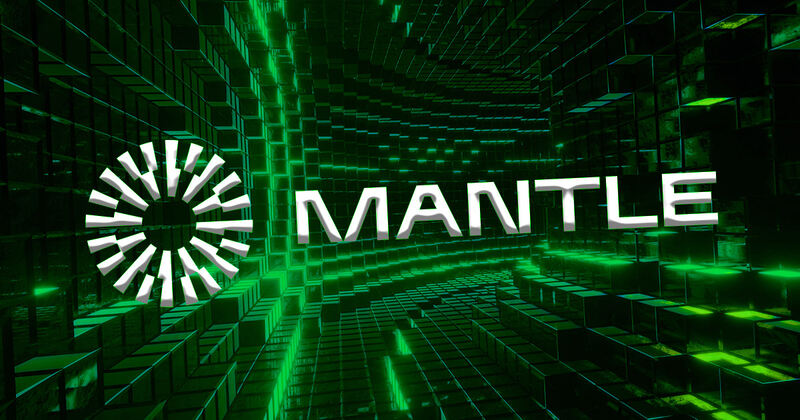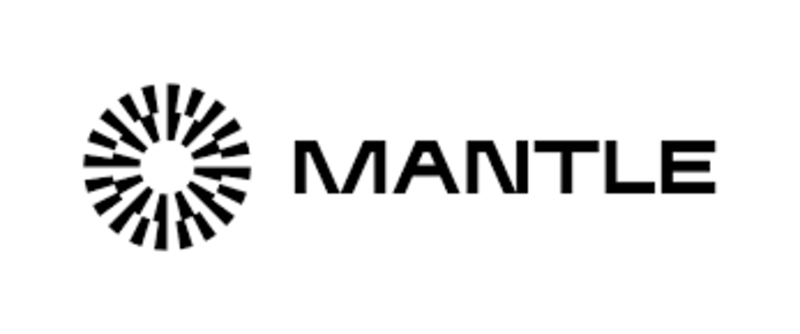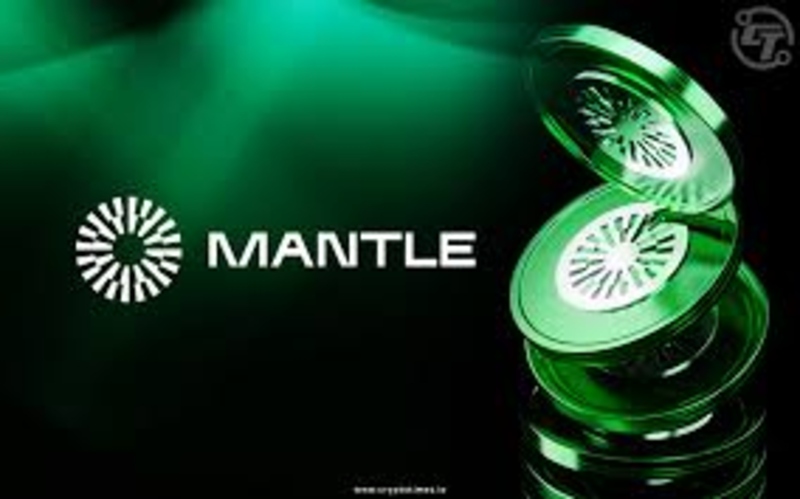Curious about what is Mantle and how it impacts Ethereum’s future? Dive into this detailed guide to discover everything you need to know about this Layer 2 solution, its key features, use cases, and more. Stay with us to the end to get the most out of Mantle’s potential.
What is Mantle?
Mantle is a Layer 2 scaling solution built on Ethereum. This means it’s designed to make Ethereum faster and cheaper. Ethereum, as you may know, is a powerful blockchain, but it struggles with slow transaction times and high fees. Mantle helps fix these problems by taking some of the work off Ethereum’s main network, making everything more efficient.
It’s important because Layer 2 solutions like Mantle help Ethereum scale. Ethereum is the foundation of many decentralized applications (dApps), from finance to gaming. The network has its limits, though. More users mean slower transactions and higher fees. Mantle aims to solve this by using a modular architecture, a unique feature that makes it stand out from other solutions.
Background: Ethereum Layer 2 scaling solutions
Ethereum’s Layer 2 technology is about handling transactions off the main network. Think of Ethereum as a highway. If there are too many cars, traffic slows down. Layer 2 solutions like Mantle create side roads that take cars off the highway, so traffic keeps moving smoothly.
Mantle isn’t the only Layer 2 solution. There are others, like Optimism and Arbitrum, that also help with Ethereum scaling. What makes Mantle different is its modular architecture, which allows it to be more flexible. This modular design means developers can build and scale more efficiently, without the bottlenecks other Layer 2 solutions face.
Key features of Mantle
Mantle’s modular architecture is a big deal. It allows developers to separate different parts of the blockchain’s operations, improving both speed and efficiency. Traditional Layer 2 solutions handle everything together, but Mantle breaks tasks apart, handling them in separate “modules.” This keeps things moving smoothly, even during high demand.
Mantle is also EVM-compatible. That means it works with Ethereum’s Virtual Machine, the part of Ethereum that runs smart contracts. Developers who are used to building on Ethereum don’t need to learn anything new to use Mantle. This makes it easier for Ethereum developers to transition to Mantle, boosting adoption.
Security is another key feature. Since Mantle is built on Ethereum, it inherits Ethereum’s security. It doesn’t compromise on decentralization, meaning it stays true to the principles of blockchain technology while making everything faster and cheaper. With Mantle, you don’t have to worry about sacrificing security for scalability.
Use cases and applications of Mantle
Mantle’s design makes it ideal for DeFi. Decentralized finance relies on fast, low-cost transactions, and Mantle provides exactly that. Whether it’s lending, trading, or other financial services, Mantle helps DeFi platforms handle large volumes of transactions without bogging down the Ethereum network.
Another area where Mantle shines is NFTs. Non-fungible tokens often require complex transactions and can lead to network congestion. Mantle allows NFT platforms to mint and trade NFTs faster and with lower fees. Projects that rely on frequent transactions, like NFT marketplaces, can benefit greatly from using Mantle.
The Web3 ecosystem is growing rapidly, and Mantle is right in the middle of it. Web3 applications, from decentralized games to social networks, need scalable solutions. Mantle’s flexibility and efficiency make it a perfect fit for these dApps. It supports large volumes of transactions, making it ideal for the future of decentralized applications.
There’s also potential for enterprise use. Businesses looking to use blockchain technology can benefit from Mantle’s scalability and security. Whether they’re building decentralized applications or integrating blockchain into their existing systems, Mantle offers the performance and security they need.
Tokenomics and governance
Mantle has its own native token, called the Mantle Token (MNT). This token is essential to how the network operates. It’s used for transactions, staking, and governance. Governance is a key part of how Mantle is run, allowing token holders to vote on important changes to the network. This gives the community control over the direction of Mantle’s development.
The governance structure is decentralized. Token holders have a say in how the network evolves, ensuring that decisions are made in the best interest of the community. Staking MNT tokens also provides users with incentives to participate in securing the network, adding another layer of trust and security.
How Mantle improves Ethereum
Mantle’s biggest benefit is its ability to lower transaction costs. By taking transactions off Ethereum’s main network, it reduces the demand on Ethereum’s resources. This means lower gas fees for users, making Ethereum more accessible. Lower fees are a huge advantage, especially for decentralized applications that rely on frequent transactions.
Mantle also boosts scalability. Ethereum can only handle a certain number of transactions at once, and as more users join the network, that limit gets hit quickly. Mantle’s architecture allows it to handle many more transactions than Ethereum can on its own. This improves the overall capacity of the network and ensures that dApps can continue to grow without hitting bottlenecks.
Finally, Mantle offers faster transaction speeds. One of Ethereum’s main issues is how long transactions can take during peak times. Mantle helps by processing transactions faster, ensuring a better user experience. Whether you’re using a DeFi platform, minting NFTs, or interacting with a dApp, Mantle’s speed makes everything smoother.
COOK Airdrop Step-by-step guide
If you’re interested in receiving the COOK airdrop, here is a step-by-step guide to participate in Mantle’s campaign:
- Visit the Mantle Airdrop Page
To get started, head to Mantle’s official airdrop page. This is where you’ll complete the necessary steps to participate in the airdrop program. - Connect Your Wallet
Next, connect your cryptocurrency wallet to the Mantle platform. This step is required to participate in staking activities and receive rewards. - Ensure You Have Mantle Staked Ether (mETH)
To fully participate, you need to have Mantle Staked Ether (mETH) in your wallet. If you don’t have it, you can stake ETH to receive mETH. If you don’t own ETH, you can purchase it on Binance and then stake it to get mETH. - Earn Daily Powder by Opening mETH Positions
After staking mETH, you will have the opportunity to earn Powder daily for free. You simply need to open mETH positions on Mantle’s partner protocols. Powder is rewarded based on your activities on these protocols. - Complete Tasks on the Mantle Quest Page
Visit the Mantle Quest page to complete additional tasks to earn more Powder. There are currently 5 new quests that you can complete on the Mantle dashboard. Some tasks are simple social tasks, while others may require capital deployment. - Track supported protocols and Powder rates
Mantle has published a full list of supported protocols in an official tweet. You can also check the Powder rate for each protocol in the tweet. - Convert Powder to COOK tokens
The Powder you earn can be converted into COOK tokens, which is the future governance token of the Mantle LSP. This conversion will give you more influence in managing and operating the Mantle ecosystem. - Upgrade to liquid restaking token (cmETH)
mETH holders can choose to upgrade to the Liquid Restaking Token (cmETH) when it is released. This token will offer more opportunities and rewards for those willing to take on additional risk. During the transition phase, both mETH and cmETH positions will be tracked simultaneously. - Methamorphosis campaign and COOK allocation
During the Season 1: Methamorphosis campaign, Mantle has allocated a total of 250,000,000 COOK. The token generation event (TGE) is expected to take place in mid-October at the end of Season 1. Participants will be able to claim their COOK tokens on or before the day the token becomes tradable on exchanges. - Additional allocation for Puff project and Puff NFT holders
Additionally, 250,000,000 COOK tokens have been allocated to the Puff project, and 50,000,000 COOK are set aside for Puff NFT holders. - Invite friends to earn more Powder
You can also earn more Powder by inviting friends to join. Go to the “See Rules” section on the campaign page to find your referral link. Once you’ve signed the message, you will be able to view your link. - Refer to official details
For more information, you can check the official airdrop announcement. Those who participated in Mantle’s 1-year NFT mint can also claim the Mantle Sigil badge through this program.
The future of Mantle
Mantle’s roadmap is full of exciting developments. The team behind Mantle is working on new features and upgrades that will make the network even more efficient and scalable. These upgrades will help Mantle stay ahead of the competition and ensure that it remains one of the top Layer 2 solutions for Ethereum.
Partnerships are another big part of Mantle’s future. By working with other projects in the Ethereum ecosystem, Mantle is building a strong network of dApps and services. These partnerships will help grow Mantle’s ecosystem and attract more developers and users to the platform.
Mantle’s future is bright, with plans for continued growth and innovation. As Ethereum’s scalability needs continue to grow, Mantle will play a key role in ensuring that the network can keep up.





